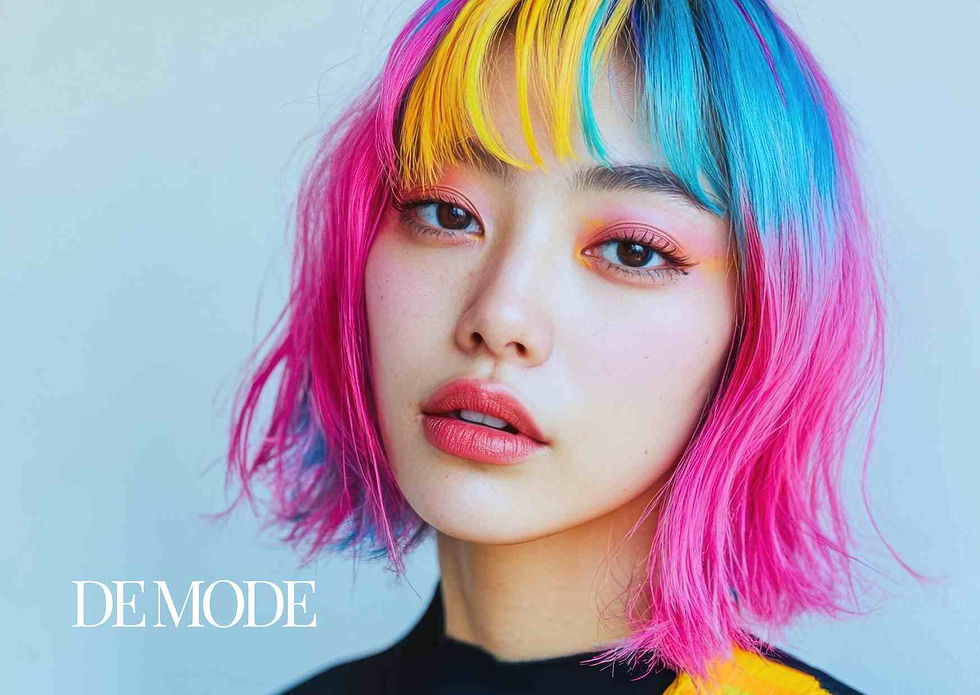"THE FUTURE OF AUGMENTED REALITY PHOTOGRAPHY - CREATING INTERACTIVE EXPERIENCES": DE MODE GLOBAL
- DE MODE

- Jul 20, 2023
- 4 min read
ORIGINALLY PUBLISHED IN DE MODE
Article Published on: 20TH JULY 2023 | www.demodemagazine.com
The world of photography is rapidly evolving with advancements in technology, and one of the most promising frontiers is Augmented Reality (AR) photography. Augmented Reality seamlessly blends digital elements into the real world, enhancing our perception and creating interactive experiences. In the realm of photography, AR has the potential to revolutionize how we capture, share, and interact with images. This essay explores the future of augmented reality photography and its potential to create immersive and interactive experiences that redefine visual storytelling.
Augmented Reality and the Power of Overlay Augmented Reality allows digital content to be overlaid onto the physical world, adding an extra layer of information and interaction to our surroundings. In photography, AR can extend beyond still images to create dynamic experiences. By scanning an AR-enhanced photograph, viewers can access additional information, animations, or even virtual objects that appear to exist within the real world. This fusion of the physical and digital realms expands the possibilities for storytelling and offers an entirely new level of engagement.

Interactive Photo Galleries and Exhibitions With AR photography, traditional photo galleries and exhibitions can be transformed into interactive and immersive experiences. Viewers can use their smartphones or AR-enabled devices to scan photographs and instantly unlock additional content, such as videos, audio recordings, or 3D models. This interactive approach to exhibitions empowers viewers to dive deeper into the stories behind the images, creating a more personalized and memorable experience.
Dynamic Storytelling through AR Narratives AR photography opens up new avenues for dynamic storytelling. Photographers can create AR narratives that unfold as viewers interact with the images. By scanning different elements in the photograph, viewers can access various chapters or perspectives of the story. This dynamic storytelling technique encourages viewers to actively engage with the photographs, becoming active participants in the narrative.
Augmented Reality Photojournalism In photojournalism, AR offers the potential to provide real-time context and updates to images. By embedding AR elements into photographs, photojournalists can continually update stories with new information, data, or multimedia content. AR photojournalism enables viewers to stay informed about ongoing events and developments, making news coverage more immersive and responsive.
Virtual Travel and Remote Exploration AR photography has the potential to revolutionize the way we experience travel and explore remote locations. With AR-enabled devices, travelers can immerse themselves in virtual tours of famous landmarks or experience remote landscapes without physically being there. AR travel photography can transport viewers to different parts of the world, providing a taste of cultural experiences and inspiring future travel plans.

Enhanced Educational Experiences In the field of education, AR photography can enhance learning experiences. Students can interact with AR-enhanced images, access additional information, historical context, or interactive quizzes. AR photo textbooks can bring subjects to life, making learning more engaging and memorable.
Artistic Expression and AR Filters AR photography opens up exciting possibilities for artistic expression. Photographers can experiment with AR filters and effects, transforming their images into interactive artworks. AR filters can dynamically change the mood, lighting, or visual elements of a photograph, allowing photographers to explore new dimensions of creativity and self-expression.
Personalized Marketing and Brand Storytelling For businesses and brands, AR photography presents unique opportunities for personalized marketing and brand storytelling. AR campaigns can engage customers in interactive experiences, allowing them to virtually try products, view 3D models, or access exclusive content. AR brand storytelling can create immersive narratives that forge deeper connections between consumers and brands.
Augmented Reality Portraits AR photography can revolutionize portrait photography, adding a layer of interactivity and personalization to traditional portraits. With AR-enhanced portraits, viewers can access multimedia content related to the subject, such as interviews, behind-the-scenes footage, or personal anecdotes. This deeper connection between the viewer and the subject enhances the emotional impact of the photograph.
Ethical Considerations and Digital Privacy As AR photography becomes more prevalent, ethical considerations and digital privacy become crucial factors to address. AR elements can potentially intrude on individuals' privacy or manipulate the perception of reality. It is essential for photographers and developers to consider the ethical implications of AR photography and respect the privacy and consent of their subjects.

Challenges in AR Photography Despite its potential, AR photography faces several challenges. Technical constraints, such as the need for AR-enabled devices and reliable internet connections, may limit the accessibility of AR experiences. Moreover, the creation of high-quality AR content requires specialized skills and tools, making it a steep learning curve for some photographers and content creators.
Conclusion The future of augmented reality photography is brimming with exciting possibilities. AR photography has the potential to revolutionize visual storytelling by creating immersive, interactive, and dynamic experiences that bridge the gap between the physical and digital worlds. From interactive exhibitions to virtual travel experiences and dynamic storytelling, AR photography empowers photographers, content creators, and storytellers to engage viewers in novel and compelling ways. As technology continues to advance, AR photography will become an increasingly integral part of visual culture, redefining how we capture, share, and interact with images. It is a realm of endless creativity, where the boundaries of storytelling and visual expression are continually pushed, opening up a world of possibilities for the future of photography.



Comments